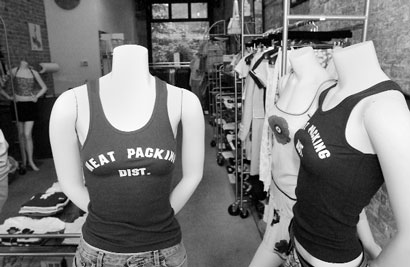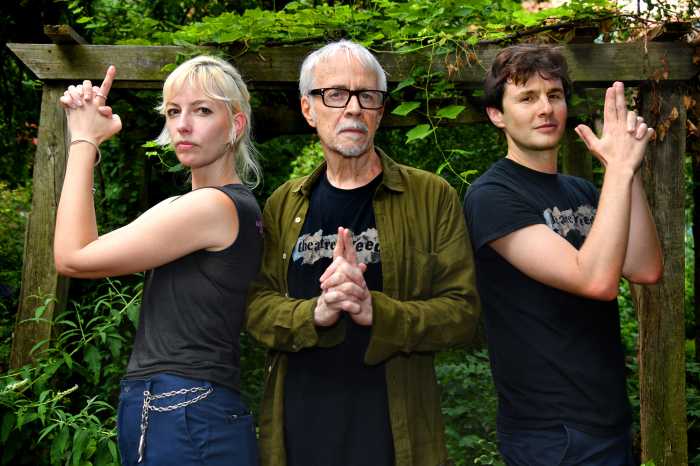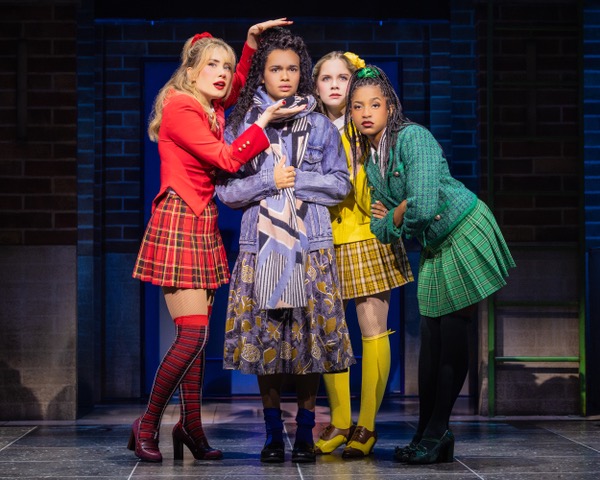By Elizabeth O’Brien
The Meatpacking District has the wee hours covered. Revelers crowd the area’s many new hotspots during the night, crossing paths with the meat workers who show up for work in the early morning.
As popular as the area has become, though, retailers and other business people say they need more traffic during the day. The Gansevoort Market Historic District, as the landmarked area is officially known, extends roughly from 14th to Gansevoort Sts. between Washington and Hudson Sts.
“If the bridge-and-tunnel people want to come in and dance like crazy on the weekends, that’s fine,” said Donna Torrance, who runs a communications firm in the district. “But what about the neighborhood on Monday afternoon?”
As part of the Meatpacking District Initiative, a group formed to promote and protect the district, Torrance helped organize a tour last month for hotel concierges from all over the city. Forty-two concierges joined the tour, dining at Lotus on 14th St. and taking in the area’s attractions so they could better introduce them to their patrons.
Torrance and others realize they need to strike a delicate balance in steering more traffic to the area. They want to support the distinctive boutiques, but if the area becomes too popular and rents rise to exorbitant levels, then the threat of chain stores will inevitably arise.
Last year, the city designated the Gansevoort Market Historic District, a major step toward preserving the area’s historic character. In most cases, this special status will protect the historic buildings from being torn down and replaced with undistinguished new construction, said Andrew Berman, director of the Greenwich Village Society for Historic Preservation. But the landmark designation affects only the facades of the buildings, not their use.
The thought of a Gap squeezed in along the cobblestoned streets prompts almost universal horror among the neighborhood’s fans. But competition for space is already becoming fierce, with the prospect of increased rents not far behind.
“Everyone wants a little piece of the Meatpacking District,” said Dustin McSwane, 22, who works at 12 Little West 12th Street, a boutique that sells lifestyle knitwear for women, men, children and pets.
McSwane said people have approached him about buying the boutique building — not a decision for co-owners Robert Escalera and Joanna Bell, who rent the space — part of a converted meat-packing facility with curved brick walls and other distinctive details.
The boutique sells an exclusive line of Meatpacking District merchandise, moderately priced, colorful tank tops, T-shirts and sweatpants printed with the neighborhood’s name on them. The sassy sweatpants, with “Meat Packing District” written across the bottom, are particularly popular, McSwane said.
The Meat Packing gear is selling well, McSwane said, but the boutique could still benefit from more patrons during the day. On a recent sunny Tuesday, there were two deliverymen wandering in to ask directions for every shopper who came into the store.
“Nobody really knows about Little W. 12th St.,” said Marlin Turner, 20, who works at Destination, an accessories store down the block that sells distinctive shoes and purses that would have tempted Carrie Bradshaw of “Sex and the City,” the recently ended HBO series that did much to raise the profile of the Meatpacking District.
“It amazes me how these shops survive,” said Freddie Leverett, a British money broker who lives on Jane and Washington Sts.
Leverett said that she is a regular shopper on 14th St., buying shoes at Jeffrey and suits at Stella McCartney. As the most established and high-profile shopping stretch of the district, 14th St. already attracts more customers than the streets to the south.
Jussara Lee, a fashion designer, set up shop on Little W. 12th St. two and a half years ago, when she decided to take a break from the wholesale business and focus on custom-made pieces. Lee said her custom business tends to grow by word of mouth, so she is less affected by the street’s foot traffic. Her samples — clean, tailored summer dresses, jackets and pants — are currently on sale for 30 percent off.
Lee said residents and workers of the Meatpacking District have enjoyed a supportive, neighborly atmosphere in spite of the area’s rapid growth. She said she chose the area over the Lower East Side, even though the rents were higher, because it was a more mature scene.
Lee had a philosophic take on the changes that have come to the Gansevoort area: “You can’t be too nostalgic,” Lee said. “It’s New York and everything happens so fast.”































